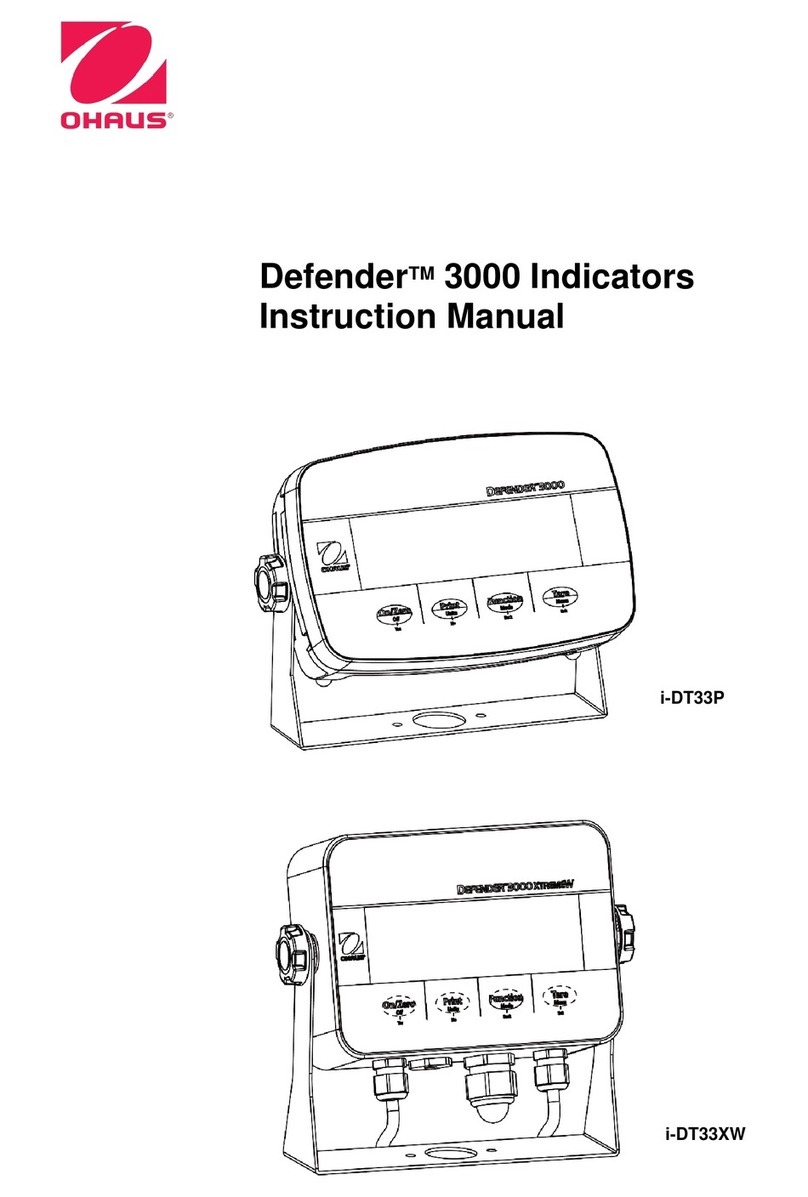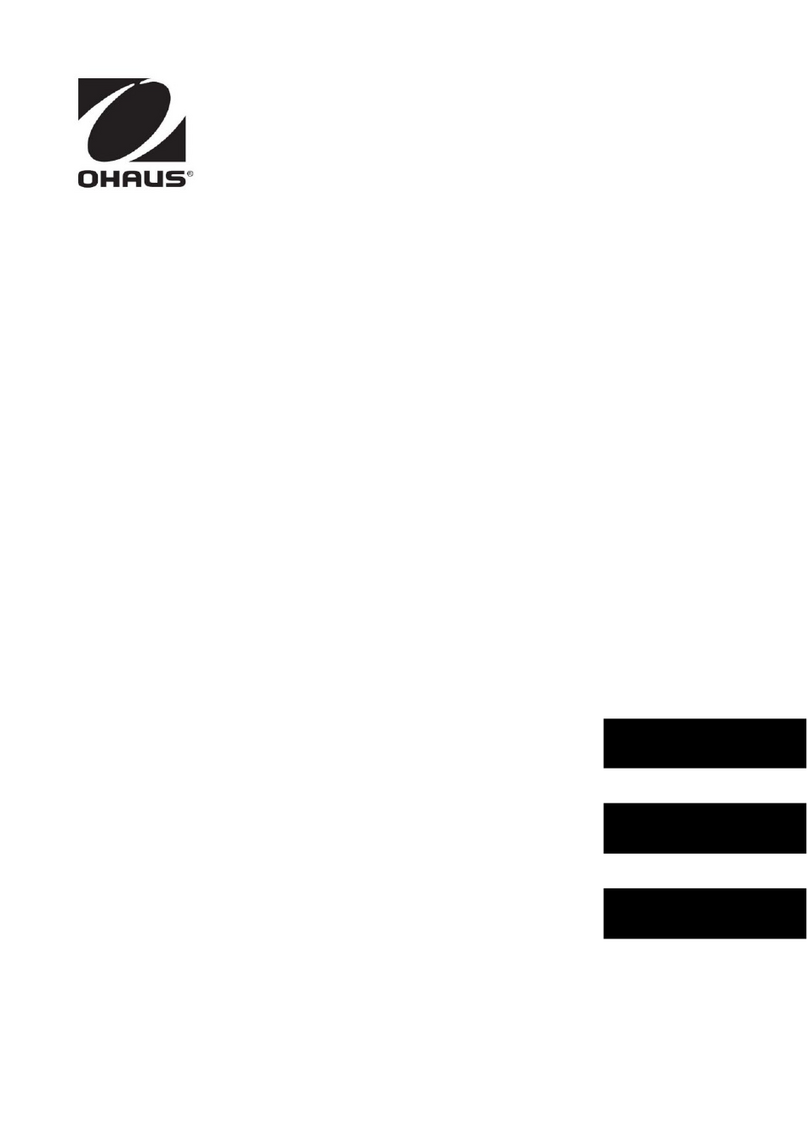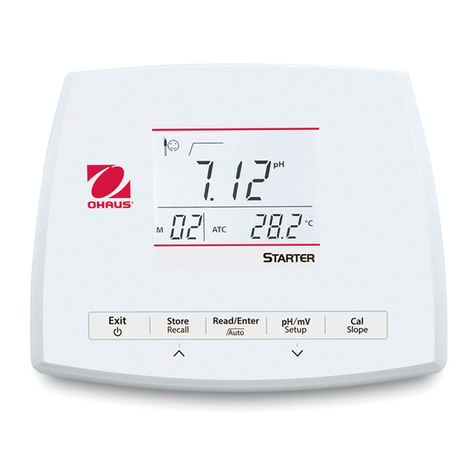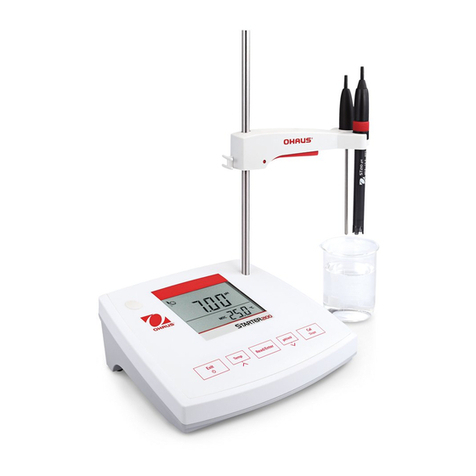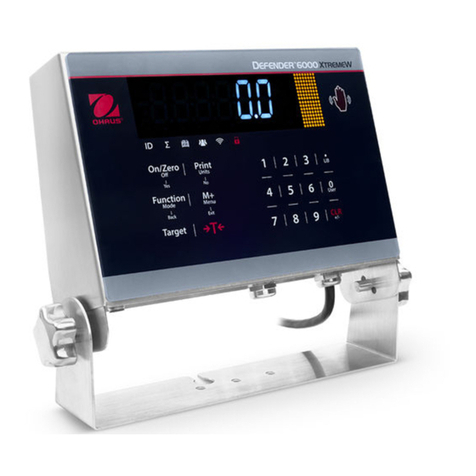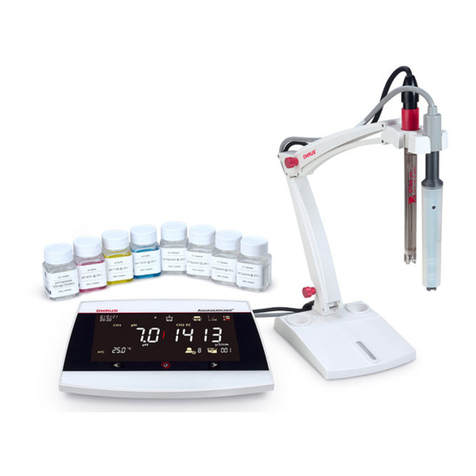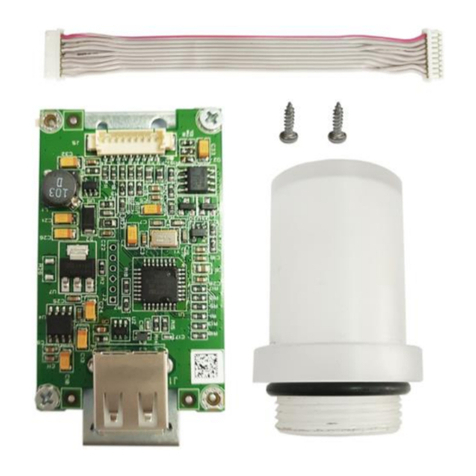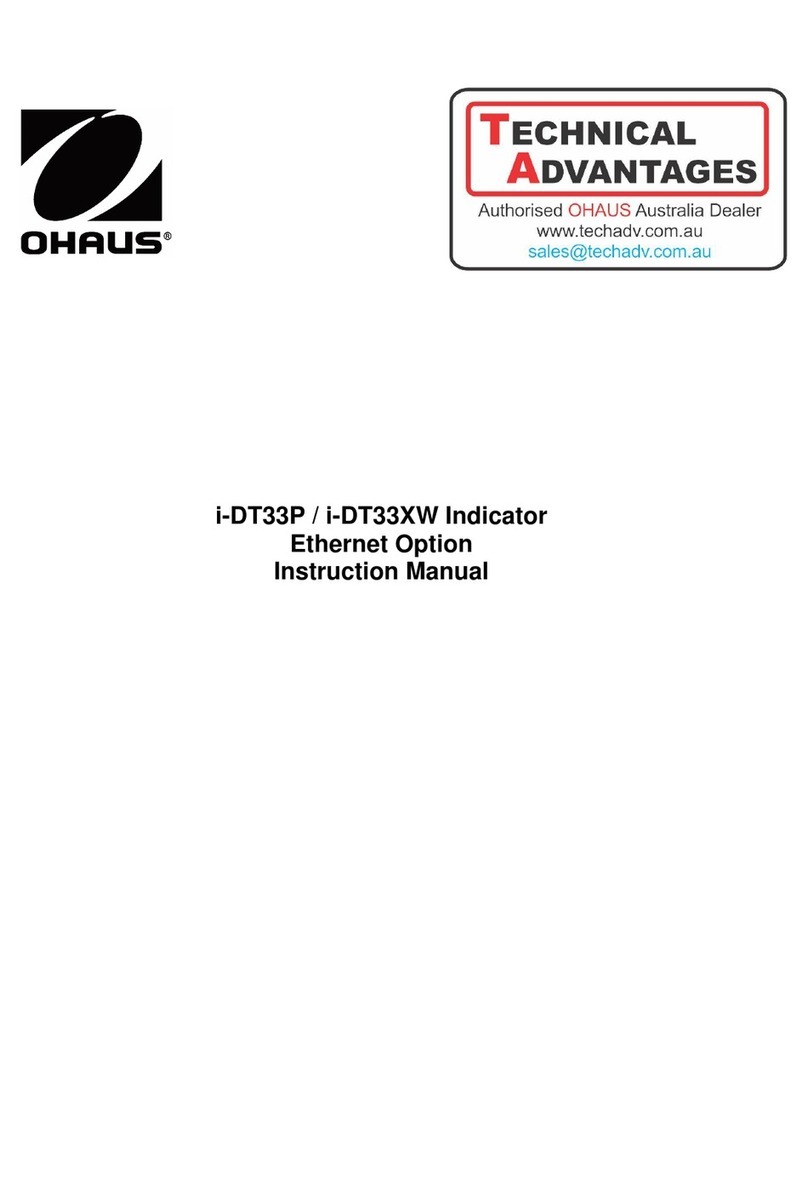
Ohaus Corporation, 19A Chapin Road, P.O. Box 2033, Pine Brook, NJ, 07058 2033, USA
Declaration of Conformity We, Ohaus Corporation, declare under our sole responsibility that the balance models listed below marked with
CE are in conformity with the directives and standards mentioned.
Balance model (s) Moisture Analyzer MB45
Marked with: EC Directive (Including applicable amendments) tandard
73/23/EC EN61010-1:1993 + A2: 1995
Electrical equipment for use within specified voltage limits Safety requirements for Electrical Equipment for Measurement, Control
Laboratory Use, Part 1: General Requirements
89/336/EC EN61326:1997 (class B)
Electromagnetic compatibility EMC Emissions, residential, commercial and light industry.
EN61326:1997 + A1:1998 (minimal requirements)
EMC Immunity: Minimum test requirements.
EN61000-3-2:1995 + A1:1998 + A2: 1998; EN61000-3-3:1995
EMC Part 3 (for equipment rated input current < or=16A)
Limits Section 2: Limits for harmonic current emissions
Limits section 3: Limitation of voltage fluctuations and flicker in low
voltage supply systems
Last two digits of the year in which the CE marking was affixed: 00
Additional tandards
CAN/C A-C22.2 No. 1010.1-92; UL td. No. 3101-1
Safety requirements for Electrical Equip. for measurement, Control and Laboratory Use, Part 1; General Requirements
FCC FCC, Part 15, class A Emission
A /NZ 4251.1 A /NZ 4252.1 Emission and Immunity
I O 9001 Registration for Ohaus Corporation.
Ohaus Corporation, USA, was examined and evaluated in 1994 by the Bureau Veritas Quality International,
BVQI, and was awarded ISO 9001 registration. This certifies that Ohaus Corporation, USA, has a quality system that conforms with the international standards
for quality management and quality assurance (ISO 9000 series). Repeat audits are carried out by BVQI at intervals to check that the quality system is
operated in the proper manner.
FCC NOTE: THIS EQUIPMENT HAS BEEN TESTED AND FOUND TO COMPLY WITH THE LIMITS FOR A CLASS A DIGITAL DEVICE, PURSUANT TO
PART 15 OF THE FCC RULES.
THESE LIMITS ARE DESIGNED TO PROVIDE REASONABLE PROTECTION AGAINST HARMFUL INTERFERENCE WHEN THE EQUIPMENT IS
OPERATED IN A COMMERCIAL ENVIRONMENT. THIS EQUIPMENT GENERATES, USES, AND CAN RADIATE RADIO FREQUENCY ENERGY
AND, IF NOT INSTALLED AND USED IN ACCORDANCE WITH THE INSTRUCTION MANUAL, MAY CAUSE HARMFUL INTERFERENCE TO RADIO
COMMUNICATIONS. OPERATION OF THIS EQUIPMENT IN A RESIDENTIAL AREA IS LIKELY TO CAUSE HARMFUL INTERFERENCE IN WHICH
CASE THE USER WILL BE REQUIRED TO CORRECT THE INTERFERENCE AT HIS OWN EXPENSE.
Ohaus Corporation, Pine Brook, NJn
THIS DIGITAL APPARATUS DOES NOT EXCEED THE CLASS A LIMITS FOR RADIO NOISE EMISSIONS FROM DIGITAL APPARATUS AS SET OUT IN
THE INTERFERENCE CAUSING EQUIPMENT STANDARD ENTITLED DIGITAL APPARATUS, ICES 003 OF THE DEPARTMENT OF COMMUNICA
TIONS CANADA.
CET APPAREIL NUMERIQUE RESPECTE LES LIMITES DE BRUITS RADIOELECTRIQUES APPLICABLES AUX APPAREILS NUMERIQUES DE CLASSE
A PRESCRITES DANS LA NORME SUR LE MATERIEL BROUILLEUR: APPAREILS NUMERIQUES, NMB 003 EDICTEE PAR LE MINISTRE DES
Unauthorized changes or modifications to this equipment are not permitted.

